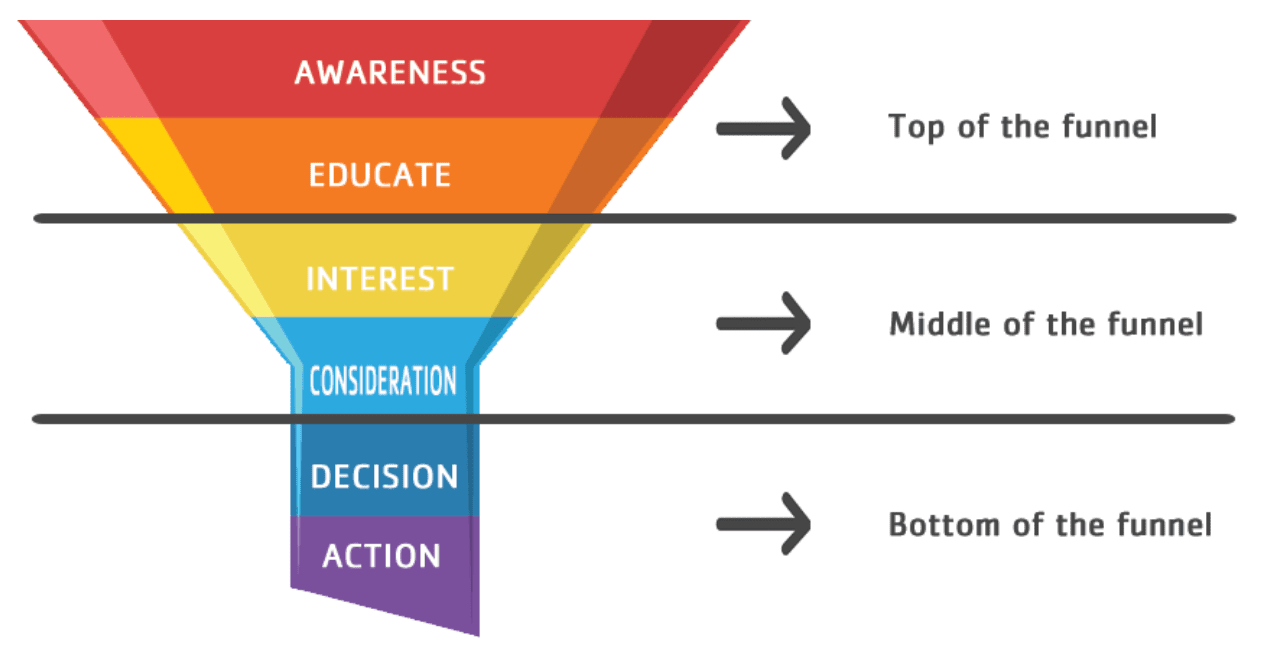Define Your Sales Funnel to Optimize Your Digital Marketing Efforts
Published by Spinutech on July 30, 2018

With any type of advertising, you are marketing to individuals who are at different points in their decision process and buying cycle depending on the product or service you have to offer. This is where defining your sales funnel comes into play.
Having an understanding of your sales funnel allows you to better understand which marketing tactics are best suited for attracting new prospects. If you Google what a sales funnel looks like, for the most part, you see similar models broken down into different tiers. You will notice models consisting of as few as three stages and some with as many as eight. This is due to how granular you want to be when looking at the different tiers of your sales funnel. With fewer tiers, your approach is more broad. The more tiers you have, the more calculated your approach.
What Does a Sales Funnel Look Like?
A general sales funnel consists of the following tiers:
Awareness – You’re helping a potential customer learn of your product or service.
Educate – Now that the individual or company is aware of your product or service, it’s important to educate them on who you are and what you have to offer.
Interest – By now the prospect has an understanding of who you are and the offerings you provide. If they are in the market for your product or service, they will further research how you stack up vs. the competition. A large piece of this will likely come from online reviews (such as Google My Business or Facebook) in an attempt to gain trust and confidence in your brand.
Consideration – The prospect is now aware of your brand, educated on what you provide, and is interested in your product or service, but have yet to make a next step or decision.
Decision – The prospect has evaluated the options and is ready to make a decision.
Action – Congrats! The prospect has now turned into a customer or client when they make the actual purchase.
Now with a basic understanding of the different tiers of your sales funnel you are better able to position marketing tactics depending on which tier you’re looking to bring into your sales funnel. Obviously, we would all like individuals who are already aware of our brand, educated about our products and services, and ready to make a decision (bottom of the funnel). However, this is generally not the case and why we advertise.
Which marketing tactics are best suited for each stage of your sales funnel?
Breaking down the sales funnel into tiers helps shape your digital marketing efforts.

By breaking down the sales funnel into top, middle, and bottom tiers, this now better helps you relate the appropriate digital marketing effort(s) to the customer journey. Each tier (top, middle, and bottom) is equally important as each prospect is unique in terms of their level of awareness, education, or understanding of your product or service. Some prospects may be ready to make a decision immediately, while others may be completely unaware of what you offer.
With a defined sales funnel and a basic understanding of how each of these stages relate to the customer journey, you can now apply digital marketing efforts to feed your sales pipeline.
Which tactics make the most sense for the top of the funnel?
Should top of the funnel tactics serve a different purpose vs. the middle or bottom?
Yes and yes. Fortunately, in today’s progressive digital marketing world, we have tools and ad platforms which allow you to advertise to everyone — regardless of where they might fall within your sales funnel.
Spinutech works with clients with sales and marketing goals from lead generation (bottom of the funnel) to review management (middle of the funnel) to brand awareness (top of the funnel). Just as each prospect who enters your sales funnel is unique, each of our clients is unique, requiring a tailored digital marketing strategy.
Need help defining your sales funnel? Or matching digital marketing efforts to it? Contact us to start a digital marketing project.